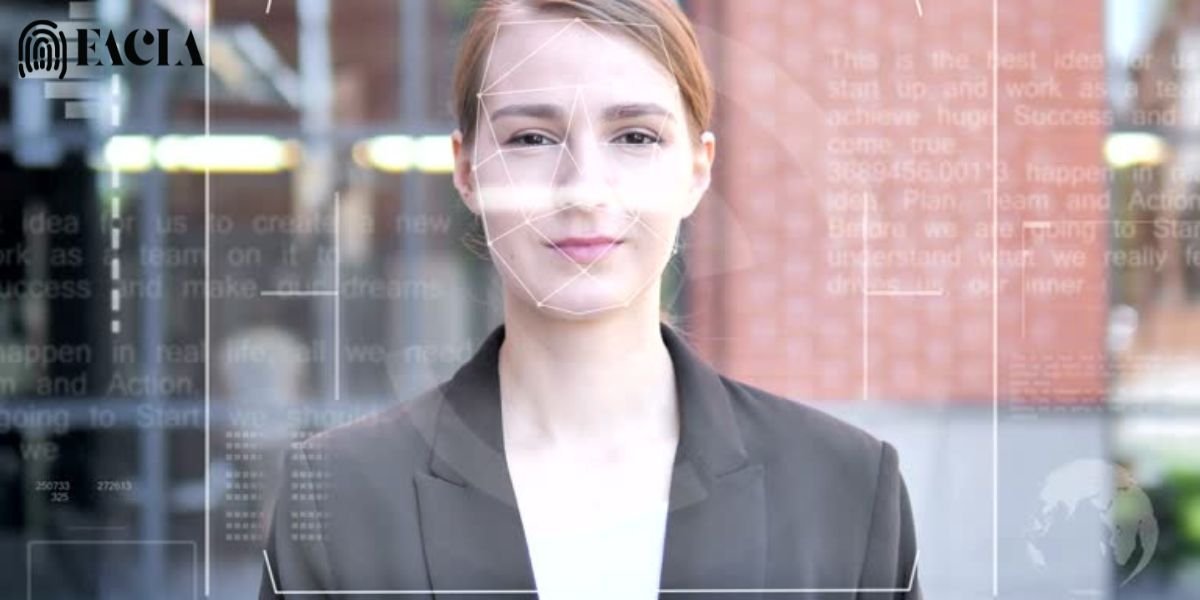To me, the need for robust and convenient security has never been greater. Traditional passwords, once the gatekeepers of our digital lives, are proving to be increasingly vulnerable and troublesome. This is where biometric authentication steps in, offering a revolutionary approach to identity verification that leverages our most unique traits. From unlocking our smartphones with a glance to accessing sensitive data with a touch, biometrics are rapidly becoming the cornerstone of modern security, promising a future where your identity is your key.
What is Biometric Authentication: The Core Concept
Biometric authentication works by confirming a person’s identity through their distinct physical or behavioral traits, making it a reliable security method. It moves beyond the outdated “what you know” (passwords) or “what you have” (keys, tokens) to focus on “who you are.”
Biometric Authentication Meaning and Explanation
The word “biometrics” originates from Greek, combining “bios” for life and “metron” for measurement. In essence, it’s the science of measuring and analyzing unique human characteristics. Unlike a password that can be forgotten, stolen, or guessed, biometric data is inherently tied to the individual, making it a far more secure and personalized form of authentication.
Brief History of Biometric Authentication
The concept of using unique human traits for identification dates back to ancient times, with fingerprints being used in Babylon as early as 500 BC. Formalized systems emerged in the 19th century, notably Alphonse Bertillon’s body measurements, which were soon superseded by fingerprinting due to pioneers like Sir Francis Galton and Edward Henry.
Automated research began in the 1960s with early facial recognition and the FBI’s funding pushing for the automation of fingerprint systems. The 1980s saw the rise of voice recognition, and iris recognition was proposed in 1985, patented by 1994. In the early 2000s, biometrics transitioned from limited government applications to becoming widely used across consumer technology and multiple industries.
Common Use Cases of Biometric Authentication in Everyday Life
Biometric authentication isn’t just for high-security facilities anymore; it’s seamlessly integrated into our daily routines. Chances are, you’ve already used it multiple times today. Common examples include:
- Unlocking smartphones and tablets with your fingerprint or face.
- Making secure mobile payments using facial or fingerprint verification.
- Accessing banking apps and online accounts.
- Passing through airport security using facial recognition technology or fingerprint scanners at e-gates.
- Logging into laptops and PCs without typing a password.
How Does the Biometric Authentication Process Work?
The magic of biometric authentication lies in its complicated, yet seemingly effortless, two-phase process: enrollment and verification.
The Biometric Authentication Process: From Enrollment to Verification
- Enrollment: This is the initial setup phase. A sensor captures your biometric trait, extracts unique features, and converts them into a digital “template” (not a raw image) for secure storage. The quality of this initial data is crucial for accuracy.
- Verification/Authentication: When you attempt access, a new sample is captured and converted into a template. This new template is compared against the stored one; if it matches beyond a threshold, access is granted. Liveness detection is often employed to prevent spoofing using fake biometrics.
Exploring Diverse Biometric Authentication Methods
Biometric authentication methods can be broadly categorized into two main types: physical biometrics and behavioral biometrics.
Physical Biometrics: Using Your Unique Biological Traits
These methods rely on distinct anatomical characteristics.
Fingerprint Recognition
- How it works: Scanners analyze unique ridge and valley patterns on fingertips.
- Pros: Widely adopted, highly convenient, relatively inexpensive to implement, and generally accurate.
- Cons: Can be affected by dirt, moisture, cuts, or wear on the skin.
- Common Use Cases: Smartphones, laptops, physical access control, time and attendance systems.
Facial Recognition
- How it works: Cameras map facial features to create a unique template.
- Pros: User-friendly, hands-free, increasingly accurate with advancements in AI.
- Cons: Can be sensitive to lighting conditions, angles, and sometimes raises privacy concerns. Early systems had issues with bias, though ongoing development aims to mitigate this.
- Common Use Cases: Smartphones (e.g., Face recognition on iPhone), public security surveillance, border control, identity verification for online services.
Iris and Retina Recognition
- How it works: Iris recognition technology involves analyzing patterns in the colored part of the eye; retina maps blood vessels at the back of the eye.
- Pros: Extremely accurate, highly unique, very difficult to spoof.
- Cons: Can be more intrusive (requiring closer interaction with a scanner), typically requires specialized and more expensive hardware.
- Common Use Cases: High-security environments like data centers, military facilities, and some border control points.
Hand Geometry
- How it works: Measures the unique shape, size, and length of your fingers and hand.
- Pros: Less susceptible to environmental factors like dirt or cuts, relatively easy to use.
- Cons: Less unique than other biometrics, requiring larger sensors.
- Common Use Cases: Time and attendance tracking, physical access to buildings.
Behavioral Biometrics: Recognizing Your Unique Actions
These methods analyze distinctive patterns in human actions.
Voice Recognition
- How it works: Voice recognition analyzes unique characteristics of your voice, like pitch and rhythm.
- Pros: Convenient, hands-free, can be used remotely (e.g., over the phone).
- Cons: Can be affected by background noise, illness, or voice impersonations (though advanced systems use liveness detection and deep analysis to counter this).
- Common Use Cases: Voice assistants, customer service authentication, and remote banking.
Signature Dynamics
- How it works: Analyzes the dynamics of signing, including speed, pressure, and stroke order.
- Pros: Familiar action for users, provides a good audit trail.
- Cons: Can be challenging to differentiate genuine from highly skilled forgery, may require specific signing pads.
- Common Use Cases: Document signing, point-of-sale transactions.
Eystroke Dynamics/Gait Analysis
- Subtler behavioral patterns are used for continuous authentication by monitoring typing rhythms or walking patterns.
Advantages of Biometric Authentication
The widespread adoption of biometrics is driven by several compelling advantages over traditional authentication methods.
Enhanced Security
- Difficult to Replicate or Steal: Unlike passwords or physical keys, biometric traits are extremely difficult to duplicate, steal, or forge.
- Stronger Non-Repudiation: Biometric authentication provides a stronger assurance that the person acting is indeed who they claim to be.
- Reduced Risk of Phishing and Social Engineering: Biometrics largely eliminate the threat of phishing attacks, as there’s no password to trick users into revealing.
Improved User Experience
- Convenience: Users no longer need to remember complex passwords, PINs, or carry physical tokens.
- Speed: The authentication process is often instantaneous, significantly reducing login times and friction.
- Seamless Integration: Biometrics can be seamlessly integrated into devices and applications, providing a smooth and intuitive user experience.
Increased Efficiency and Automation
- Streamlined Access Control: Biometrics enable faster and more efficient access to buildings, data centers, and digital systems.
- Faster Transactions: Expedited payment processes and identity verification for various services.
- Reduced Administrative Overhead: Less time spent on password resets or managing lost credentials.
Disadvantages of Biometric Authentication
Despite its many advantages, biometric authentication is not without its challenges and potential drawbacks. Understanding these is crucial for responsible implementation and addressing user concerns.
Privacy Implications
- Data Storage and Protection: Biometric templates, although not raw images, are sensitive data that require paramount security and encryption.
- Regulatory Frameworks: Concerns around data privacy have led to regulations like GDPR and various state laws governing biometric data.
- Consent and Transparency: Users must provide explicit consent for the collection and use of their biometric data, with clear communication.
Accuracy and Reliability
- False Acceptance Rate (FAR) and False Rejection Rate (FRR): Biometric systems have inherent error rates where unauthorized users might be accepted (FAR) or authorized users rejected (FRR).
- Factors Affecting Accuracy: Environmental conditions, sensor quality, demographic variations, and temporary changes to traits can all affect system performance.
- “Failure to Enroll” Scenarios: In rare cases, an individual’s traits might be difficult for the system to enroll accurately.
Irreversibility and Compromise
- Cannot be reset: Unlike passwords, a compromised biometric cannot simply be “changed,” highlighting the importance of secure template storage and advanced liveness detection.
Bias and Fairness
- Algorithmic Bias: Some biometric systems, particularly older facial recognition systems, have faced criticism for exhibiting bias against certain demographic groups.
Real-World Applications of Biometric Authentication
Biometric authentication has moved beyond niche applications and is now ubiquitous across numerous sectors.
- Personal Devices: Smartphones, tablets, laptops, and PCs use biometrics for secure unlocking and access.
- Financial Services: Financial Services: Banking apps, online payments, and ATMs use biometrics for secure logins, transactions, and fraud prevention — particularly in reducing incidents of ATM fraud.
- Travel and Border Control: E-gates at airports and digital identity programs leverage biometrics for expedited processing and enhanced security.
- Access Control (Physical & Logical): Biometrics grant secure access to buildings, data centers, computer systems, and networks.
- Healthcare: Used for accurate patient identification and secure access to medical records.
- Law Enforcement and Forensics: Critical for criminal identification and investigation, as well as disaster victim identification.
The Future of Biometric Authentication: Trends and Innovations
The landscape of biometric authentication is continuously evolving, driven by advancements in artificial intelligence, sensor technology, and a growing demand for seamless security.
- Multimodal Biometrics: Combining multiple biometric methods (e.g., fingerprint + face) for enhanced security and accuracy.
- Behavioral Biometrics for Continuous Authentication: Passively monitoring user behavior over time to detect anomalies for ongoing security.
- Contactless Biometrics: Advancements in touchless fingerprint, vein, and iris scanning for hygiene and convenience.
- AI and Machine Learning in Biometrics: Improving accuracy, liveness detection, and adaptability, while addressing bias.
- Integration with IoT and Edge Computing: Enabling secure access to smart homes, connected vehicles, and real-time authentication for IoT devices.
Frequently Asked Questions
Is biometric authentication 100% secure?
Although considered very secure, no authentication system can guarantee complete infallibility. Biometrics significantly enhance security, often used with other factors for robust protection.
Can my biometrics be stolen?
Raw biometric data is generally not stored; encrypted mathematical “templates” are. Recreating a “live” biometric from a stolen template is extremely difficult due to liveness detection.
What happens if I injure my finger or my face changes?
Most systems allow enrolling multiple biometrics (e.g., several fingers) or adapting to minor changes. Fallback authentication methods like PINs are also available.
Is biometric data considered private information?
Yes, it’s highly sensitive. Strict data protection regulations (like GDPR) govern its collection, storage, and usage to ensure privacy.
What’s the difference between biometric identification and authentication?
Authentication involves a one-to-one comparison to confirm whether a person is who they claim to be. Identification is a 1-to-many comparison to identify an unknown individual from a database.
Conclusion
Biometric authentication represents a pivotal leap in digital security, offering unparalleled convenience without compromising on protection. By leveraging the inherent uniqueness of each individual it provides a powerful, intuitive, and highly effective means of verifying identity in an increasingly connected world. While challenges related to privacy, accuracy, and bias remain important considerations, ongoing innovation and responsible implementation are continuously addressing these concerns.
As we move forward, biometrics will undoubtedly continue to evolve, becoming even more integrated into our lives, making our digital and physical interactions more secure, seamless, and uniquely personal. Embracing these advancements responsibly will be key to unlocking the full potential of this transformative technology.




